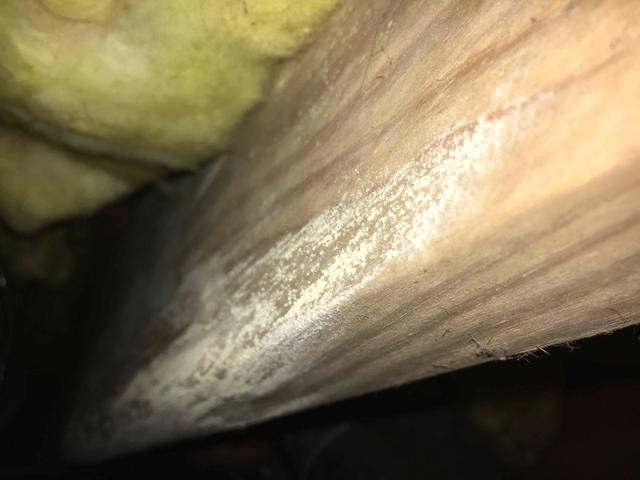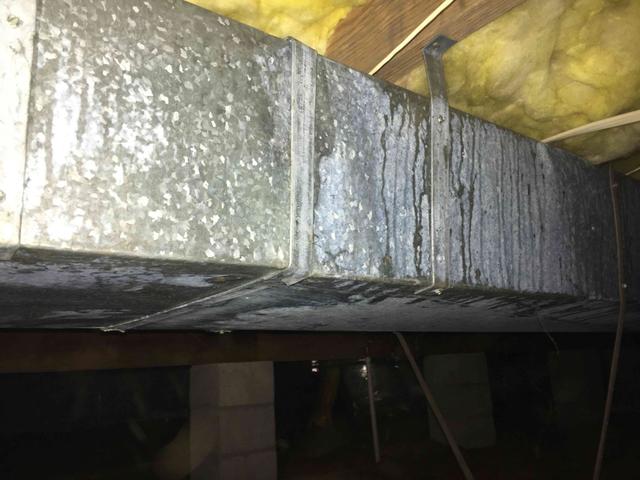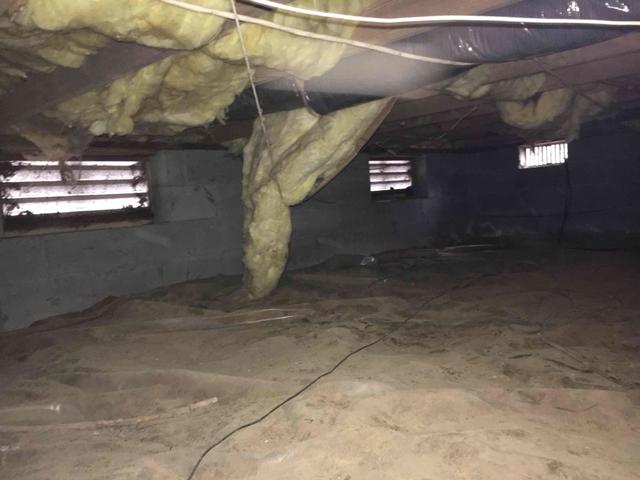
Crawl Space Door
Crawl space doors are subjected to the elements. This means they often warp, rot, fade, and even break. They are seldom airtight, creating a large hole for humidity and moisture to dump into the crawl space. They also create easy access for pests, critters, and snakes to make their home under yours.

Efflorescence
Block walls allow moisture to migrate through them from outside and suck up moisture in the ground. The white powdery spots on the walls are efflorescence, a result of moisture pulling minerals in the block to its surface. This is a good indicator that moisture is a consistent problem in the crawl space.

Crawl Space Mold
Mold grows on organic materials in the crawl space such as the floor joists or the paper backing of fiberglass insulation. The microbial growth is a result of high relative humidity and moderate temperatures in the crawl space.

Ductwork in the Crawl Space
As warm humid air floods into the crawl space, it meets cold ductwork and condensation occurs. Water is a conductor so, as more warm air fills the crawl space, the ducts that are trying to pump cold air to cool down your home are being warmed up.

Crawl Space Debris
Crawl spaces are full of debris from construction, service persons working, rodents and critters dragging in trash, and insulation. Because crawl spaces are seldom accessed, damp, and dark, they are an ideal place for critters to make their home. Not only are the rodents and critters nesting in the insulation and tearing it down.

Falling Fiberglass Insulation
Fiberglass insulation absorbs moisture like a sponge. The moisture damages the fibers of the insulation causing it to delaminate or separate from itself and "drip" from the floor. Moisture in the batts adds to the weight of the material causing the batts to sag and ultimate fall away from the floors.


